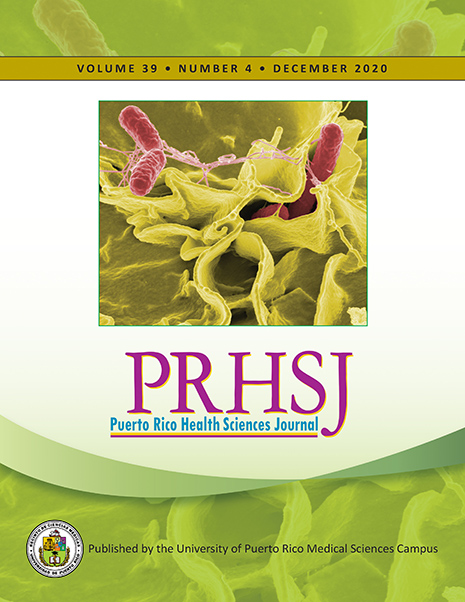Resumen
Objective: Microvascular free-tissue transfer (M-FTT) is a surgical technique for traumatic injuries that allows tissue reconstruction based on donor tissue composition. The aim of this study is to describe the surgical experiences of M-FTT for reconstruction of complex soft tissue injuries in the lower extremities of a Hispanic population. Methods: This is a descriptive study of all M-FTT procedures performed by a single plastic surgeon from 2012 to 2016 at Puerto Rico Medical Center. Demographics, admission diagnosis, mechanism of trauma, type of free flap, co-morbidities, length of stay, donor site and complications were evaluated. Results: Eight patients who underwent single M-FTT procedures at lower extremity were enrolled in the study. The average age at time of surgical reconstruction was 36.9+13.2 years with six males and two females. The transfer procedures were performed using donor sites of six rectus abdominis flaps and 2 radial forearm flaps. Posterior tibial artery was used in 62.5% and popliteal artery were used in 37.5% as recipient arteries. Average surgical time was 4.4+0.7 hours with an average length of hospital stay of 22.9+20.1 days. Post-operative complications were reported in three M-FTT procedures: two cases who suffered venous thrombosis and one case who suffered partial necrosis. Conclusion: The M-FTT offers an adequate surgical option for patients who present with complex soft tissue traumatic injuries at the lower extremities.
Authors who publish with this journal agree to the following terms:
a. Authors retain copyright and grant the journal right of first publication with the work simultaneously licensed under a Creative Commons Attribution License that allows others to share the work with an acknowledgement of the work's authorship and initial publication in this journal.
b. Authors are able to enter into separate, additional contractual arrangements for the non-exclusive distribution of the journal's published version of the work (e.g., post it to an institutional repository or publish it in a book), with an acknowledgement of its initial publication in this journal.
c. Authors are permitted and encouraged to post their work online (e.g., in institutional repositories or on their website) prior to and during the submission process, as it can lead to productive exchanges, as well as earlier and greater citation of published work (See The Effect of Open Access).
